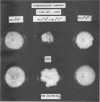Abstract
Niederpruem, Donald J. (Indiana University Medical Center, Indianapolis). Role of carbon dioxide in the control of fruiting of Schizophyllum commune. J. Bacteriol. 85:1300–1308. 1963.—Compatible matings of Schizophyllum commune carried out in sealed chambers showed good vegetative growth and clamp-connection formation but fruiting was markedly inhibited. This inhibition was reversed by either aeration or the inclusion of alkali in the chambers. These phenomena occurred on a defined medium, with glucose as the primary carbon source, and were dependent on the level of carbohydrate employed. Gas mixtures of air-CO2 (95:5) severely restricted the fruiting process when applied during mating or before the formation of fruit body primordia. It is proposed that respiratory CO2 plays an important role in the regulation of form of S. commune.
Full text
PDF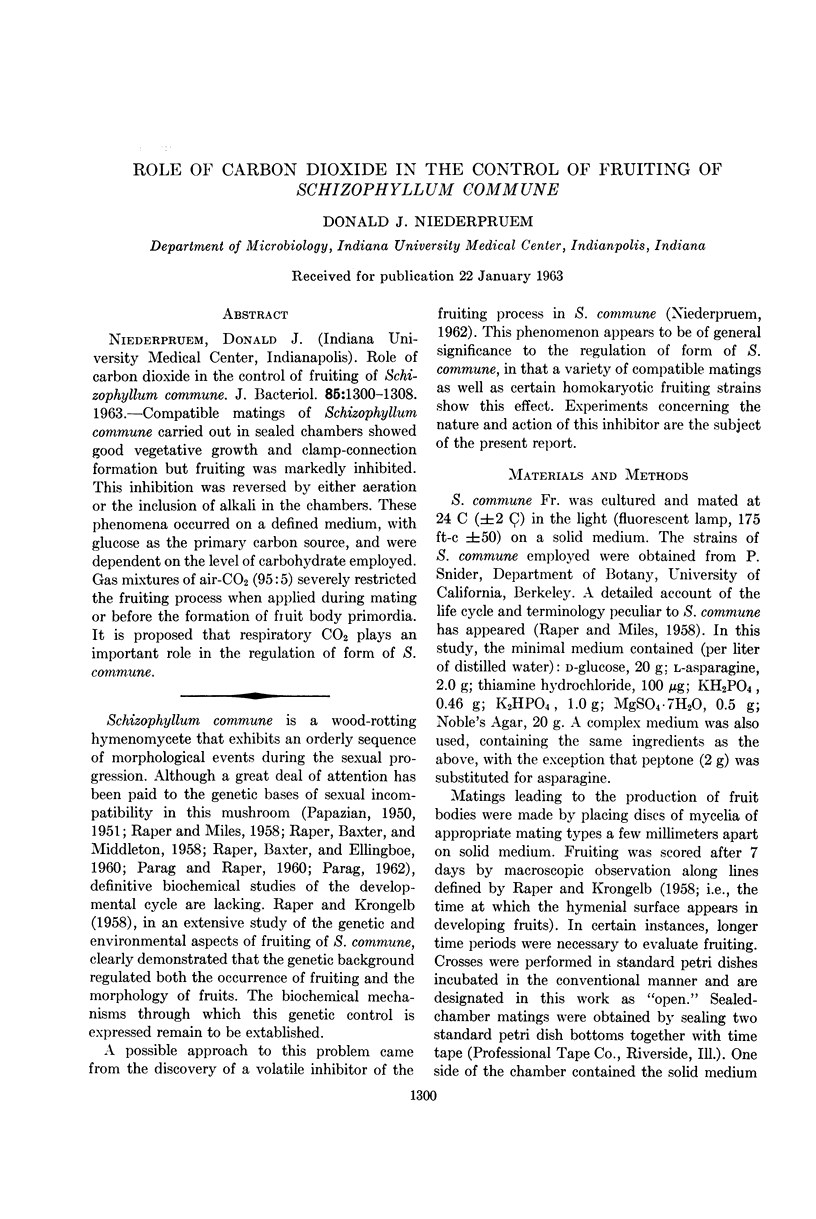
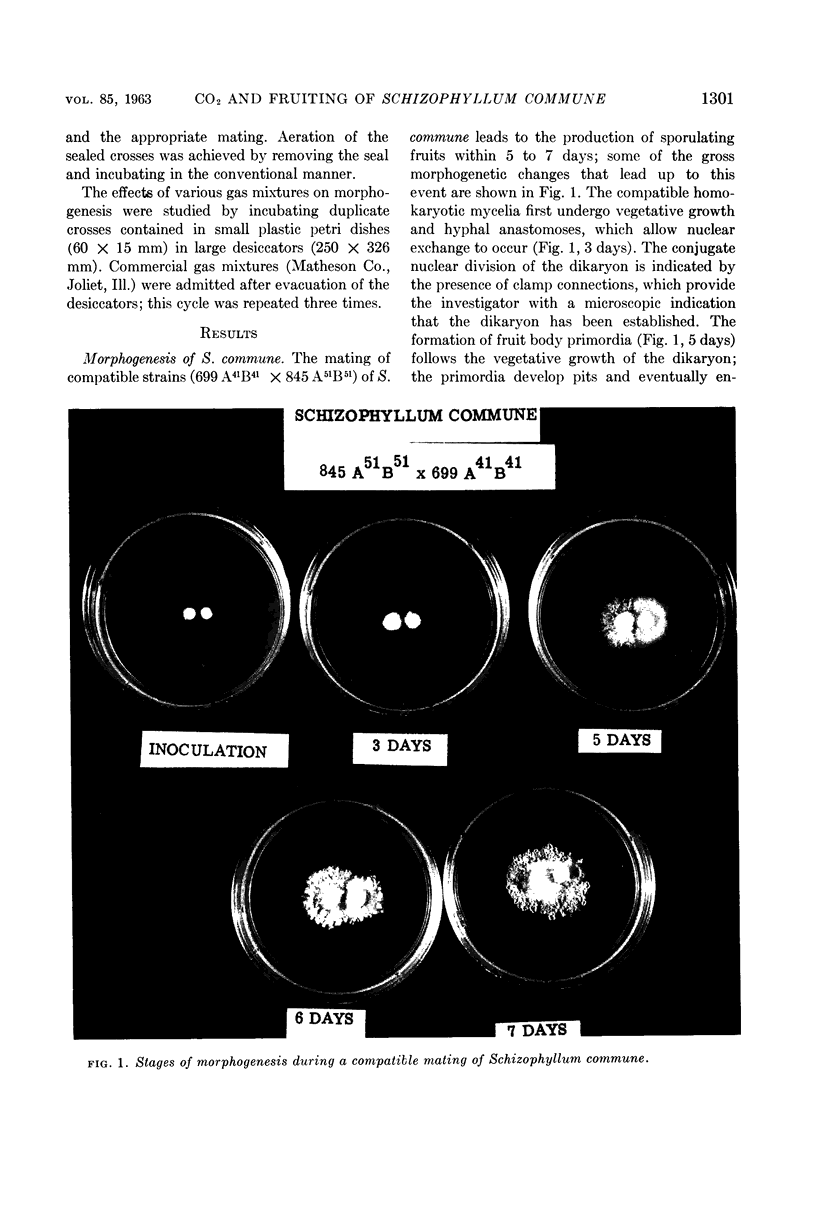
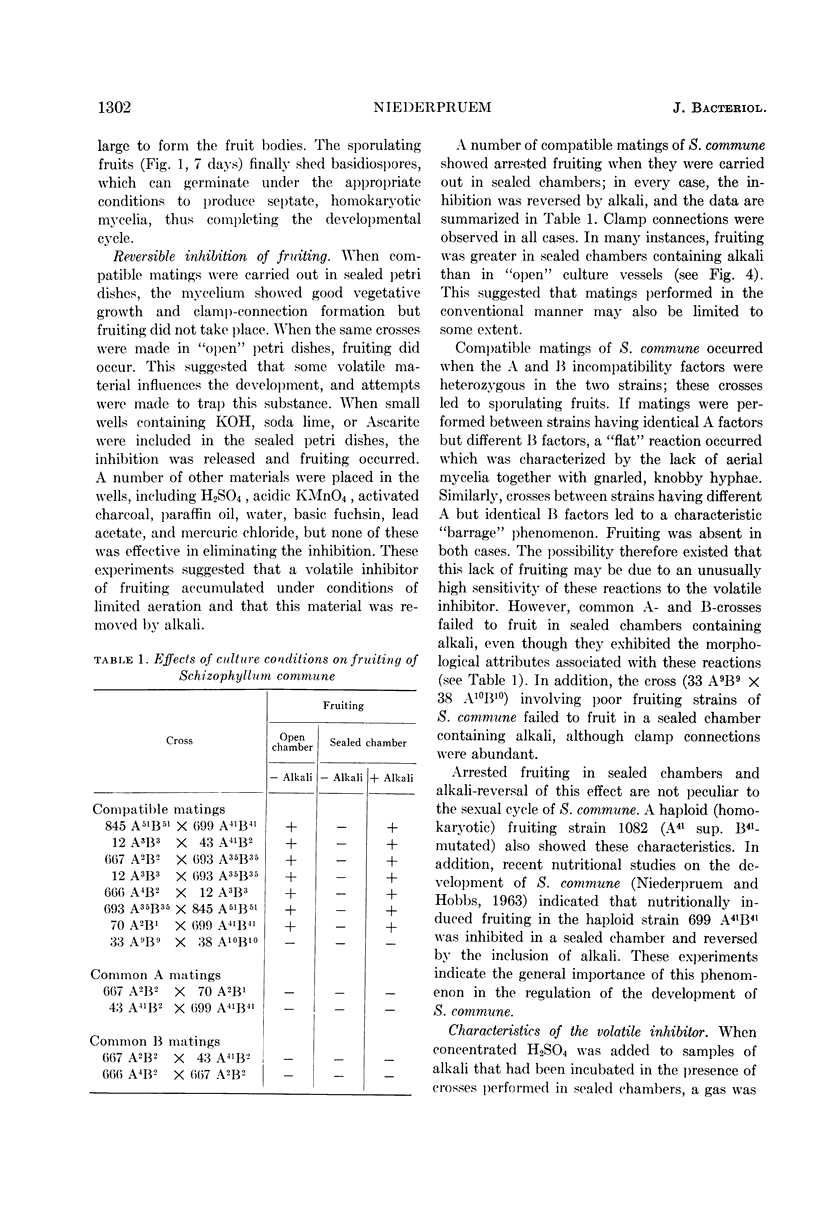
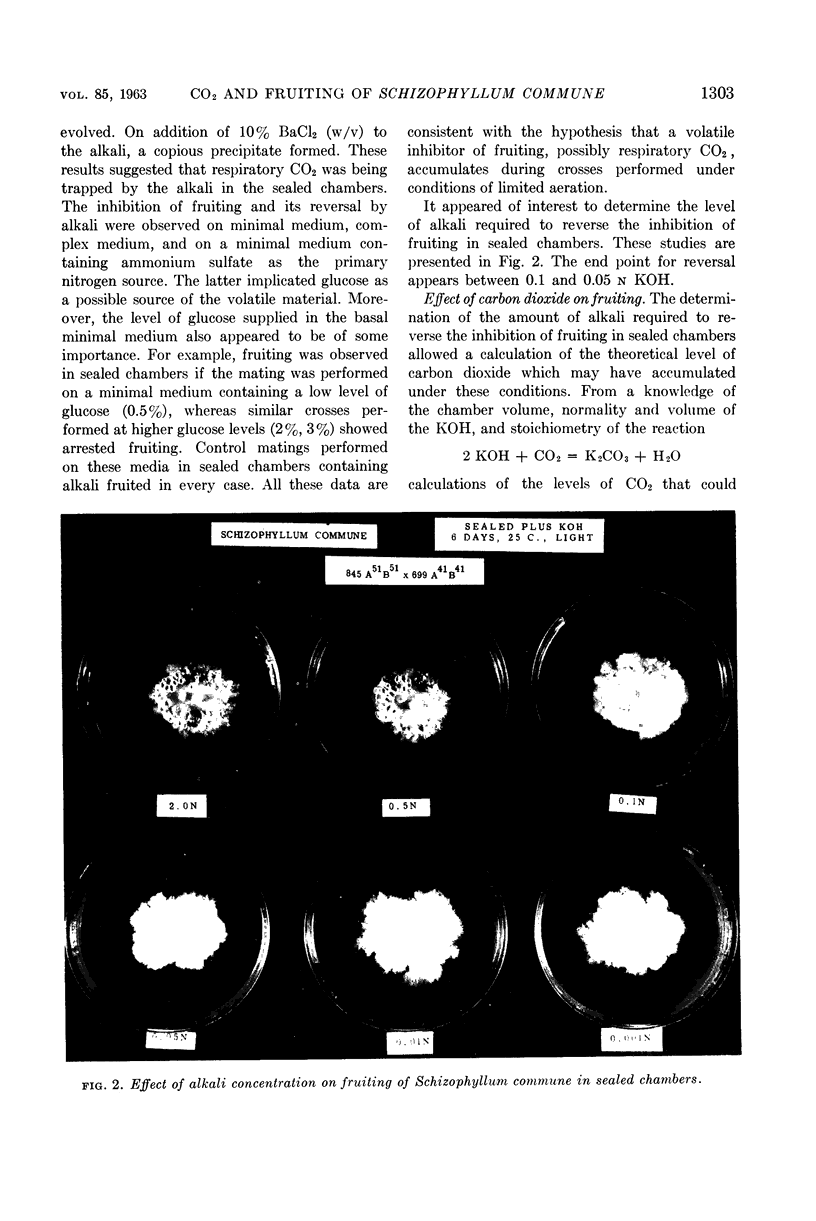
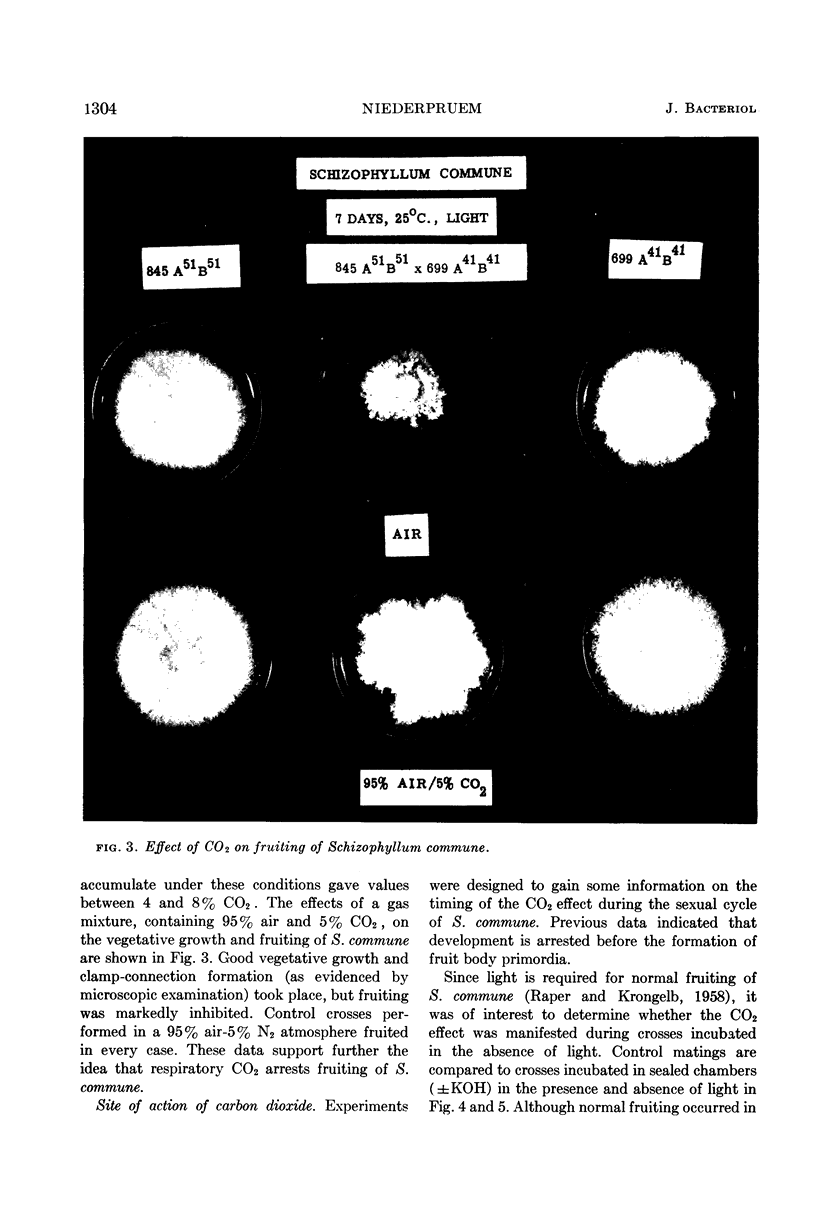
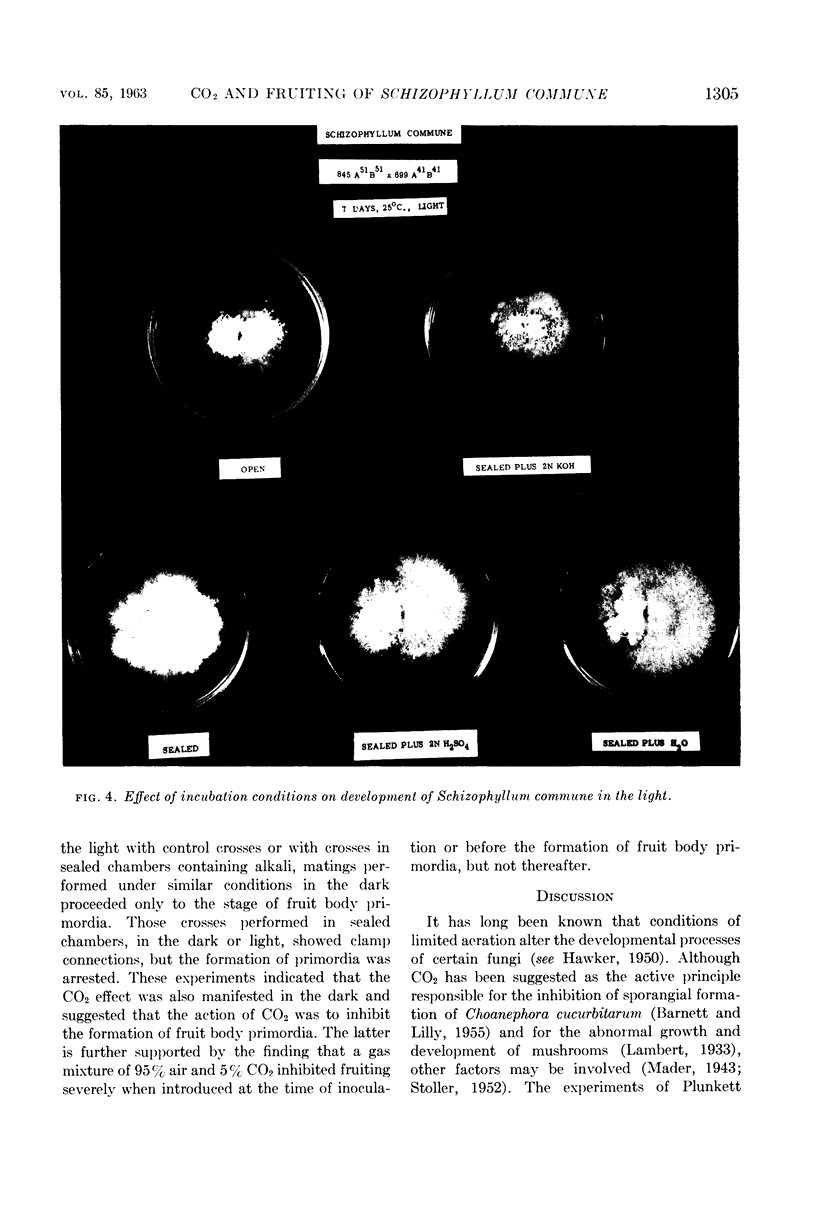
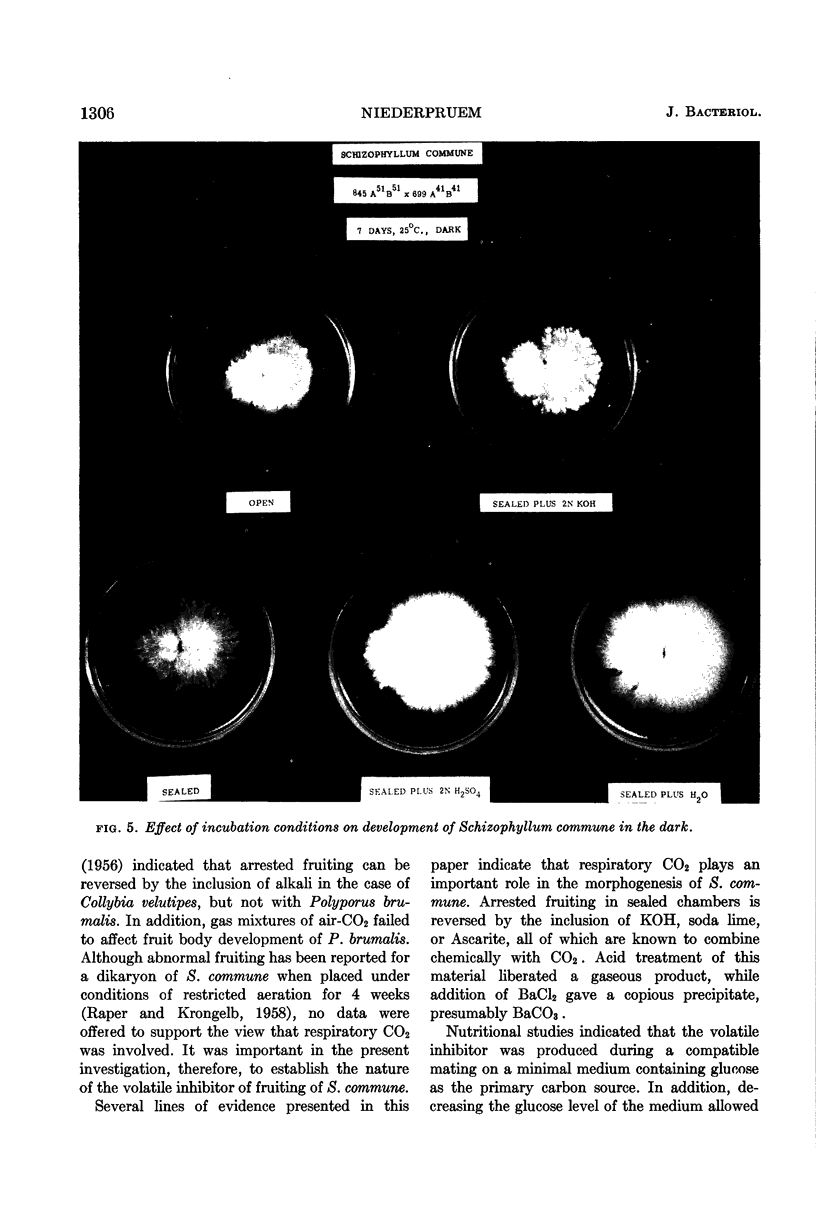
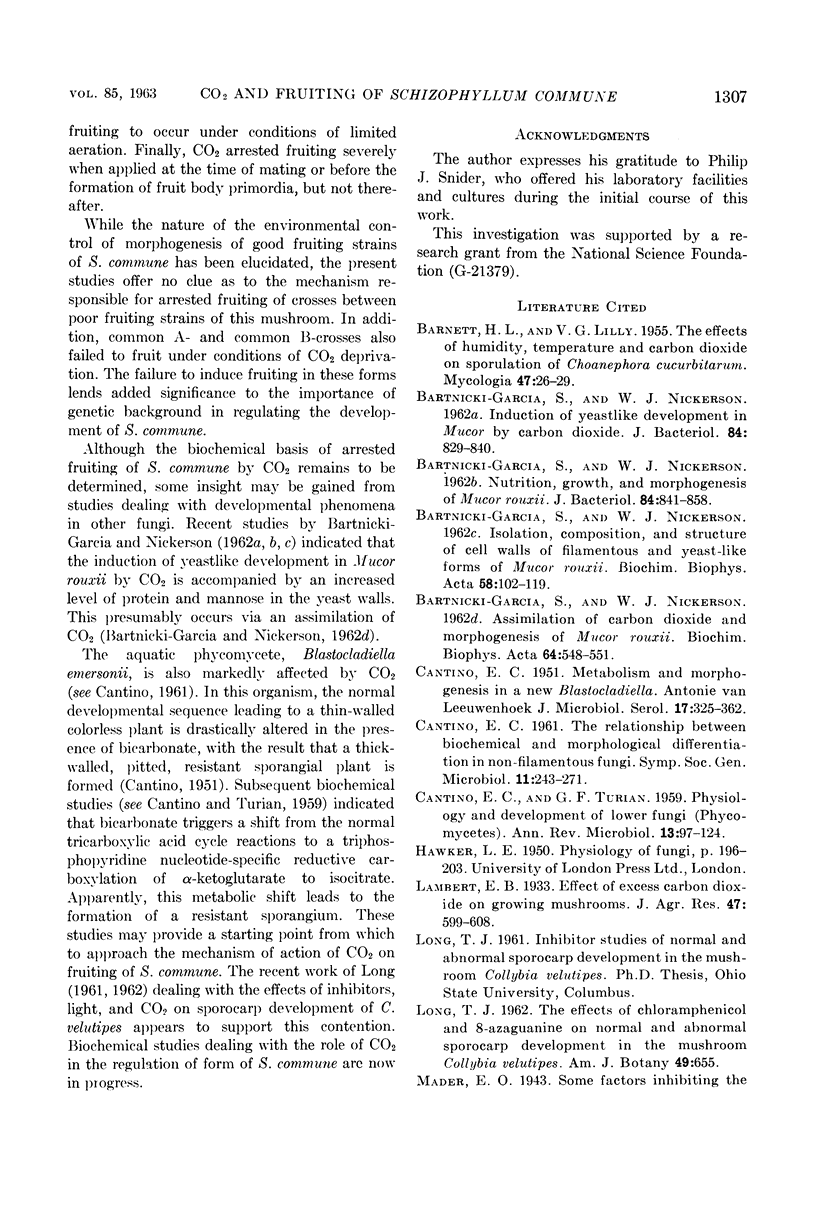
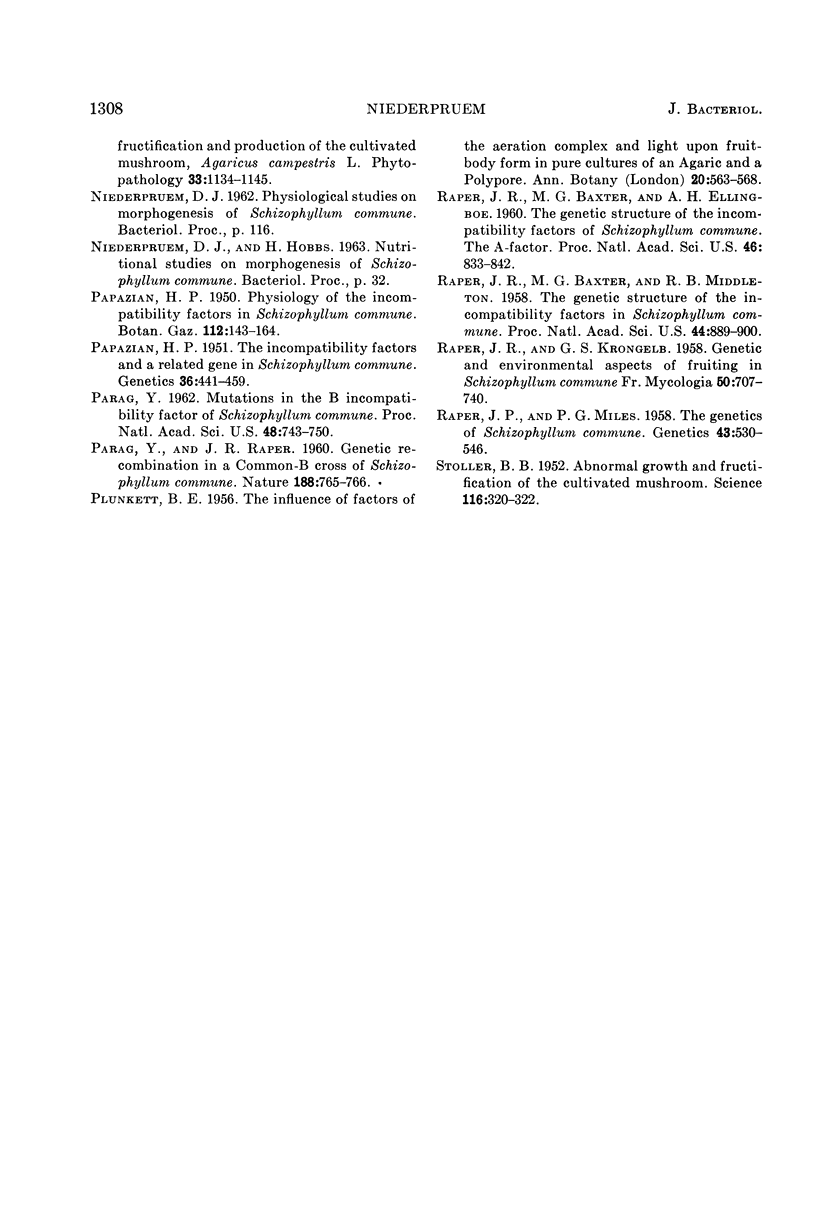
Images in this article
Selected References
These references are in PubMed. This may not be the complete list of references from this article.
- BARTNICKI-GARCIA S., NICKERSON W. J. Induction of yeast-like development in Mucor by carbon dioxide. J Bacteriol. 1962 Oct;84:829–840. doi: 10.1128/jb.84.4.829-840.1962. [DOI] [PMC free article] [PubMed] [Google Scholar]
- BARTNICKI-GARCIA S., NICKERSON W. J. Isolation, composition, and structure of cell walls of filamentous and yeast-like forms of Mucor rouxii. Biochim Biophys Acta. 1962 Mar 26;58:102–119. doi: 10.1016/0006-3002(62)90822-3. [DOI] [PubMed] [Google Scholar]
- BARTNICKI-GARCIA S., NICKERSON W. J. Nutrition, growth, and morphogenesis of Mucor rouxii. J Bacteriol. 1962 Oct;84:841–858. doi: 10.1128/jb.84.4.841-858.1962. [DOI] [PMC free article] [PubMed] [Google Scholar]
- CANTINO E. C. Metabolism and morphogenesis in a new Blastocladiella. Antonie Van Leeuwenhoek. 1951;17(5):325–362. doi: 10.1007/BF02062279. [DOI] [PubMed] [Google Scholar]
- PARAG Y. Mutations in the B incompatibility factor of Schizophyllum commune. Proc Natl Acad Sci U S A. 1962 May 15;48:743–750. doi: 10.1073/pnas.48.5.743. [DOI] [PMC free article] [PubMed] [Google Scholar]
- Papazian H P. The Incompatibility Factors and a Related Gene in Schizophyllum Commune. Genetics. 1951 Sep;36(5):441–459. doi: 10.1093/genetics/36.5.441. [DOI] [PMC free article] [PubMed] [Google Scholar]
- Raper J R, Miles P G. The Genetics of Schizophyllum Commune. Genetics. 1958 May;43(3):530–546. doi: 10.1093/genetics/43.3.530. [DOI] [PMC free article] [PubMed] [Google Scholar]
- Raper J. R., Baxter M. G., Ellingboe A. H. THE GENETIC STRUCTURE OF THE INCOMPATIBILITY FACTORS OF SCHIZOPHYLLUM COMMUNE: THE A-FACTOR. Proc Natl Acad Sci U S A. 1960 Jun;46(6):833–842. doi: 10.1073/pnas.46.6.833. [DOI] [PMC free article] [PubMed] [Google Scholar]
- Raper J. R., Baxter M. G., Middleton R. B. THE GENETIC STRUCTURE OF THE INCOMPATIBILITY FACTORS IN SCHIZOPHYLLIUM COMMUNE. Proc Natl Acad Sci U S A. 1958 Sep 15;44(9):889–900. doi: 10.1073/pnas.44.9.889. [DOI] [PMC free article] [PubMed] [Google Scholar]
- STOLLER B. B. Abnormal growth and fructification of the cultivated mushroom. Science. 1952 Sep 26;116(3013):320–322. doi: 10.1126/science.116.3013.320. [DOI] [PubMed] [Google Scholar]





